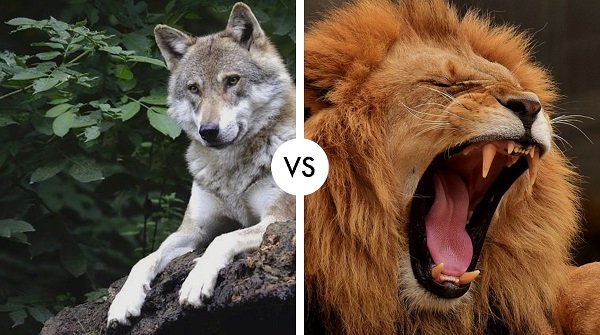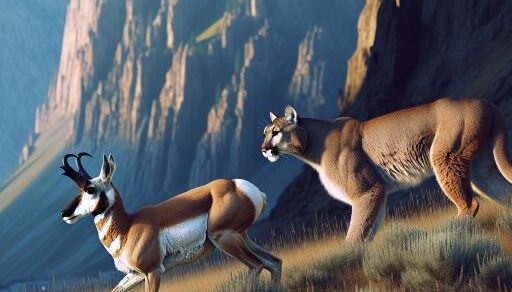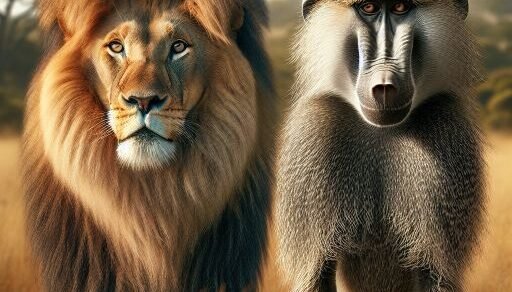When it comes to the wolf vs lion debate, there are several factors to consider. First and foremost, let’s take a look at the strength and size of each animal. The average weight of an adult male lion is around 420 pounds, while the average weight of an adult male wolf is around 130 pounds. In terms of height, the lion stands at around 4 feet at the shoulder, while the wolf stands at around 2.5 feet at the shoulder. So, as you can see, the lion is definitely the larger and stronger of the two animals.
Lions are apex predators and have a unique hunting style that makes use of their powerful strength and teamwork. They are opportunistic hunters and will prey on a variety of animals, such as antelopes, zebras, buffaloes, and wildebeests, among others.

Lions hunt primarily at night when their keen eyesight and ability to see well in the dark gives them a significant advantage. They also hunt during the day when prey is scarce or when they need to feed their young.
Habitat and Adaptation
Lions primarily inhabit the savannas and grasslands of Africa, with a small population in the Gir Forest of India. Their habitat choice is influenced by the availability of prey and water. Adapted to a hot climate, lions have a light-colored coat that reflects sunlight and a social structure that allows them to conserve energy during the hottest parts of the day.

Wolves, on the other hand, are found in a variety of habitats including forests, tundras, deserts, and grasslands. They are highly adaptable and can thrive in a range of environmental conditions, from the Arctic cold to temperate forests. Wolves have thick fur coats to protect them from severe weather and are known for their endurance, capable of covering vast distances in their search for food.
Social Structure and Communication
The social structure of lions is unique among big cats. They live in groups called prides, typically consisting of related females and their offspring, along with a coalition of males. This social system is crucial for their hunting strategy and provides protection for their young. Lions are also vocal animals, using roars and other sounds for communication within and outside their pride.
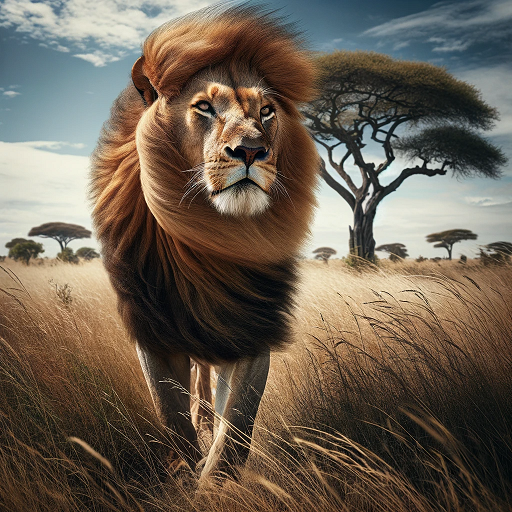
Wolves are known for their complex social hierarchy within packs. Each pack has an alpha pair that leads the group, and there is a clear pecking order among the members. This hierarchy is essential for maintaining order and cooperation during hunts. Wolves are also famous for their howling, which serves to communicate with pack members over long distances and to establish territorial boundaries.
Hunting Strategy
Lions use a cooperative hunting strategy, with several individuals working together to stalk, chase, and capture their prey. The lions work together to encircle the prey, with some lions approaching from the front to distract the animal while others approach from behind to make the kill.
Lions typically finish off their prey by suffocating it or breaking its neck. After chasing and cornering the prey, one or more lions will grab the animal with their powerful jaws and clamp down on its neck or throat, choking it until it stops breathing.
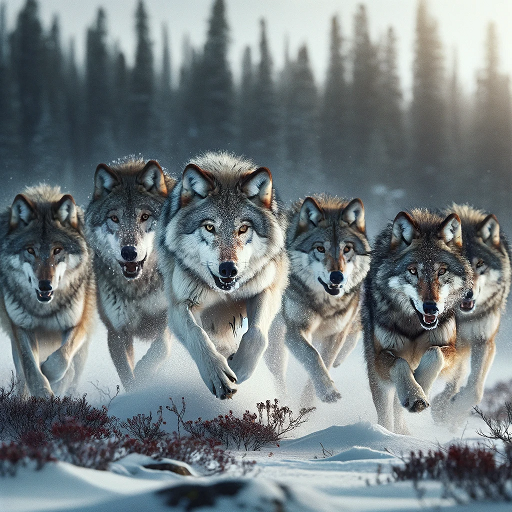
Wolves are social hunters and hunt in packs, typically consisting of 6 to 10 individuals. They hunt a variety of prey, including large mammals such as elk, moose, and bison, as well as smaller animals like rabbits, squirrels, and birds.
The hunting strategy of wolves is highly cooperative and organized, with each pack member playing a specific role. The pack will work together to surround and chase the prey, with some members acting as blockers to prevent the prey from escaping, while others close in for the kill.
Wolves typically finish off their prey by biting into the neck or throat and suffocating the animal. The pack will work together to bring down the prey, with one or more wolves biting into its neck and choking it until it stops breathing.
Who Would Win
Lions are at the top of the food chain and are considered to be apex predators, which means that they have no natural predators in their environment. However, lions will occasionally prey on other predators, such as cheetahs, leopards, and hyenas. Wolves are smaller in size compared to some African predators that lions can effortlessly hunt and kill.
Finally, when it comes down to a fight between the wolf and the lion, it’s safe to say that the lion would come out on top. With its strength, size, and hunting abilities, the lion is a true king of the jungle, and it would be a force to be reckoned with against any opponent. So, if you had to pick a winner in a fight between the wolf and the lion, the lion would come out on top with a 99% chance of winning.
Conservation Status
Finally, addressing the conservation status, lions are classified as vulnerable, with their populations declining due to habitat loss, human-wildlife conflict, and poaching. Wolves’ conservation status varies by region, but many populations have recovered due to conservation efforts, although they still face threats from habitat loss and conflict with humans.
For readers intrigued by the captivating world of animal comparisons, here are three other fascinating articles from our collection that you might enjoy:
- Cheetah vs African Lion: Dive into an exhilarating exploration of speed versus strength as we compare the agile cheetah with the mighty African lion. This article offers a unique perspective on how these two iconic predators stack up against each other. Read more about it here.
- Grizzly Bear vs Elephant: Witness the titan showdown of land giants. This intriguing article pits the formidable grizzly bear against the majestic elephant, exploring their strengths, weaknesses, and hypothetical confrontations. Discover the dynamics of this unlikely matchup here.
- Lion vs Giraffe: Experience the thrill as the king of the jungle meets one of the tallest mammals on earth. This article delves into the potential outcomes of a rare but fascinating confrontation between a lion and a giraffe. Find out more about this unique battle here.

